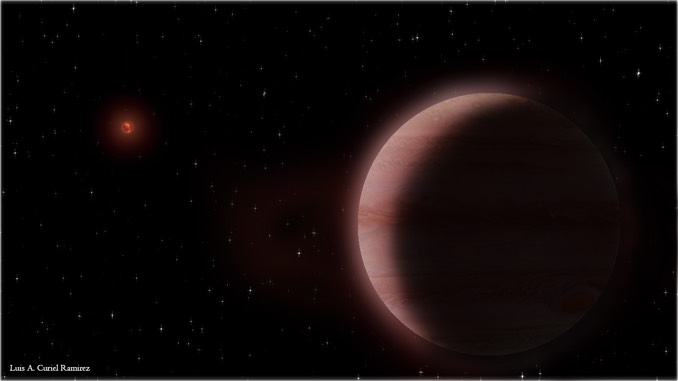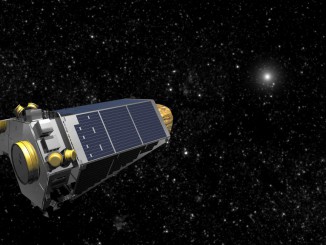
After a year and a half making careful observations of a cool dwarf star 35 light years from Earth, coupled with previous observations dating back to 2010, astronomers using the continent-size Very Long Baseline Array radio telescope managed to tease out the presence of an unseen Saturn-size exoplanet.
The discovery is the first by a radio telescope measuring the slight back-and-forth wobble of the host star caused by the gravitational tugs of a companion planet as the two move around a common centre of mass.
Extensive analysis of the data indicates the star, known as TVLM 513–46546, is orbited every 221 days by a planet with roughly the mass of Saturn. The planet orbits closer to its star than Mercury to the Sun.
“Giant planets, like Jupiter and Saturn, are expected to be rare around small stars like this one, and the astrometric technique is best at finding Jupiter-like planets in wide orbits,” said Salvador Curiel, of the National Autonomous University of Mexico. “So we were surprised to find a lower mass, Saturn-like planet in a relatively compact orbit.
“Detecting the orbital motions of this sub-Jupiter mass planetary companion in such a compact orbit was a great challenge,” he added.
The astrometric technique looks for changes in the actual position of a star to infer the presence of an exoplanet. Astronomers also can find planets by measuring slight changes in a star’s radial velocity. NASA’s now-retired Kepler satellite and the current TESS mission were designed to detect planets by measuring the dimming of starlight as exoplanets move across, or transit, the star’s disc as viewed from Earth.
“Our method complements the radial velocity method, which is more sensitive to planets orbiting in close orbits, while ours is more sensitive to massive planets in orbits further away from the star,” said Gisela Ortiz-Leon of the Max Planck Institute for Radio Astronomy in Germany.
“Indeed, these other techniques have found only a few planets with characteristics such as planet mass, orbital size, and host star mass, similar to the planet we found. We believe that the VLBA, and the astrometry technique in general, could reveal many more similar planets.”



